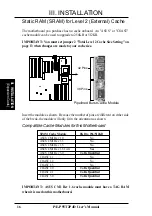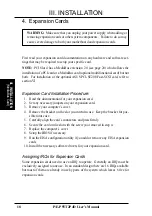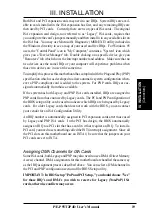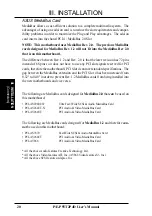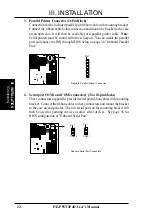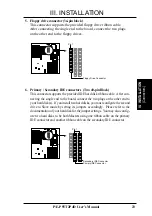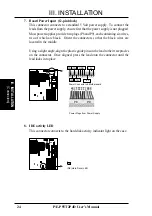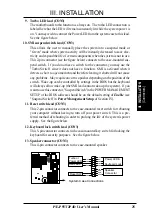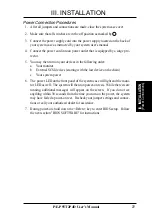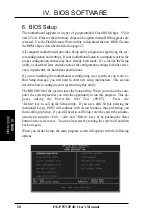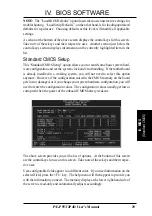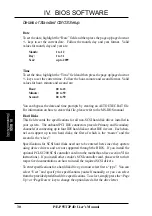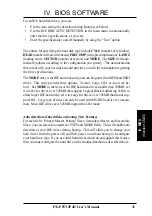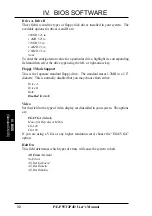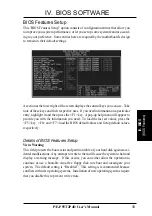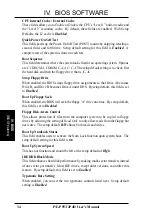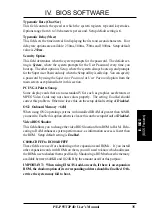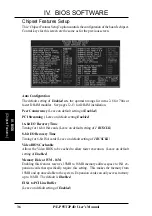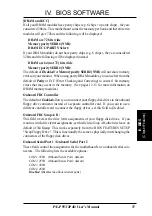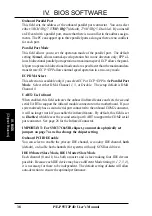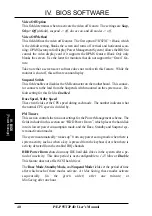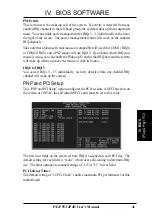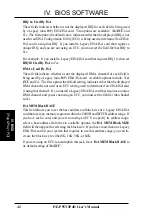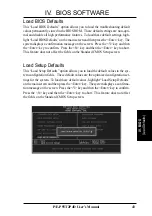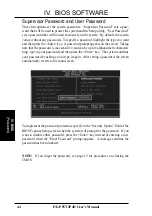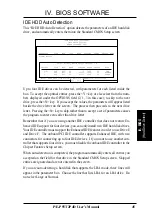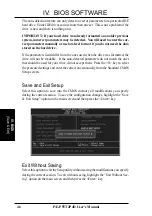
P/E-P55T2P4D User’s Manual
31
IV. BIOS SOFTWARE
IV
. BIOS
(Standard CMOS)
For an IDE hard disk drives, you can:
•
Use the Auto setting for detection during bootup (see below)
•
Use the IDE HDD AUTO DETECTION in the main menu to automatically
enter the drive specifications, or you can:
•
Enter the specifications yourself manually by using the “User” option
The entries for specifying the hard disk type include CYLS (number of cylinders),
HEAD (number of read/write heads), PRECOMP (write precompensation), LANDZ
(landing zone), SECTOR (number of sectors) and MODE. The SIZE field auto-
matically adjusts according to the configuration you specify. The documentation
that comes with your hard disk should provide you with the information regarding
the drive specifications.
The MODE entry is for IDE hard disks only, and can be ignored for MFM and ESDI
drives. This entry provides three options: Normal, Large, LBA, or Auto (see be-
low). Set MODE to the Normal for IDE hard disk drives smaller than 528MB; set
it to LBA for drives over 528MB that support Logical Block Addressing (LBA) to
allow larger IDE hard disks; set it to Large for drives over 528MB that do not sup-
port LBA. Large type of drive can only be used with MS-DOS and is very uncom-
mon. Most IDE drives over 528MB support the LBA mode.
Auto detection of hard disks on bootup (New Feature)
For each field: Primary Master, Primary Slave, Secondary Master, and Secondary
Slave, you can select Auto under the TYPE and MODE fields. This will enable auto
detection of your IDE drives during bootup. This will allow you to change your
hard drives (with the power off) and then power on without having to reconfigure
your hard drive type. If you use older hard drives which do not support this feature,
then you must configure the hard drive in the standard method as described above.

